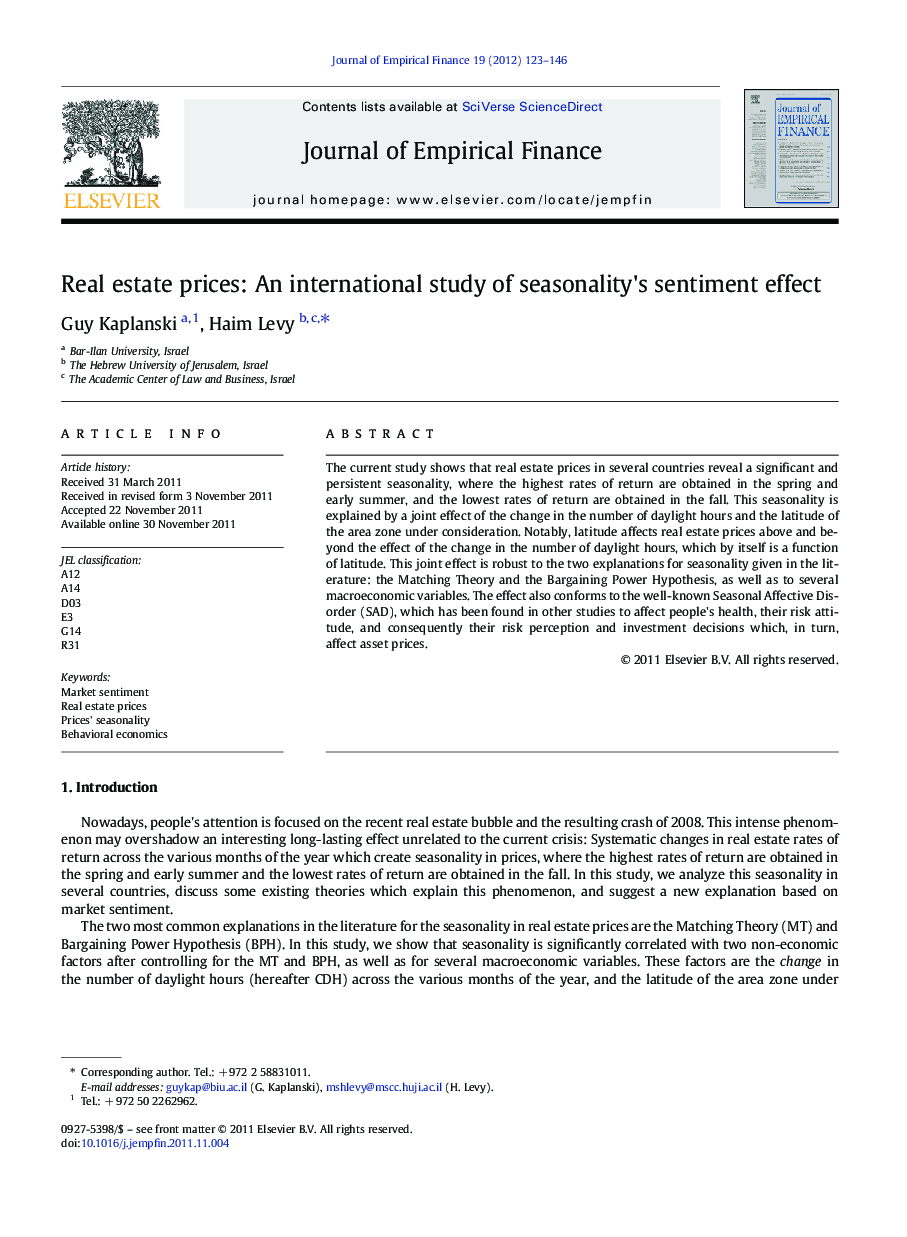| Article ID | Journal | Published Year | Pages | File Type |
|---|---|---|---|---|
| 958278 | Journal of Empirical Finance | 2012 | 24 Pages |
The current study shows that real estate prices in several countries reveal a significant and persistent seasonality, where the highest rates of return are obtained in the spring and early summer, and the lowest rates of return are obtained in the fall. This seasonality is explained by a joint effect of the change in the number of daylight hours and the latitude of the area zone under consideration. Notably, latitude affects real estate prices above and beyond the effect of the change in the number of daylight hours, which by itself is a function of latitude. This joint effect is robust to the two explanations for seasonality given in the literature: the Matching Theory and the Bargaining Power Hypothesis, as well as to several macroeconomic variables. The effect also conforms to the well-known Seasonal Affective Disorder (SAD), which has been found in other studies to affect people's health, their risk attitude, and consequently their risk perception and investment decisions which, in turn, affect asset prices.
►Real estate prices reveal a significant and persistent seasonality. ►This seasonality is explained by a joint effect of daylight hours and latitude. ►Latitude affects real estate prices above and beyond the effect of daylight hours. ►The effect is robust to the existing explanations for seasonality. ►The joint effect conforms to the well-known Seasonal Affective Disorder (SAD).
